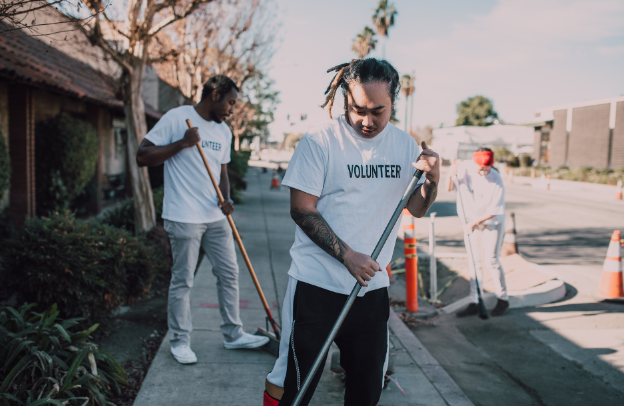Unlocking the Power of Memory in Education: How Storytelling in African Traditions Enhances Learning and Identity

Picture a warm evening in Esanland. Children gather under a wide canopy of stars, seated in a circle beneath a hearty iroko tree. No desks, no pencils, no bells, just the gentle hum of voices weaving stories, songs, and wise sayings. That moment, that circle, is the first classroom. It’s where memory becomes magic, where roots meet wings.
Learn How to Leverage Your Story through our Story To Asset Framework.
When we hear “learning,” we think of notebooks, tests, bullet points. But long before classrooms existed, African children were masters of memory, learning through emotion, rhythm, and feeling. In that circle, lessons didn’t just exist in the mind; they lived in the heart.
They learned heroes’ journeys, the deep meaning of names, the wisdom that held their communities together. These memories shaped identity, purpose, and belonging. The Kenyan scholar Dr. Ngũgĩ wa Thiong’o reminds us in Decolonising the Mind that “oral tradition … carries the soul of a people.” Memory is not just about recall; it’s connection. When children remember, they stay connected to who they truly are.
Lesson: Storytelling the First Classroom
In Esanland, storytelling isn’t just entertainment. It’s the heartbeat of education. Each evening, someone would tell tales of talking animals, courageous kings, and clever girls who made a difference. These stories weren’t just fun; they came draped in meaning and community values.
Take a mother and daughter tale of kindness. Their generosity toward strangers brings blessings back to them. It’s a story layered with emotion, drama, and life lessons. Children don’t learn it only by hearing; they feel it. It becomes a memory they carry into adulthood.
Across Africa, you’ll find similar tales in different languages, but the goal is the same: to teach you who you are and how to live well. Even the Ghanaian wisdom of Sankofa, “It is not wrong to go back for what you have forgotten,” says memory isn’t just the past. It’s a guidepost for tomorrow.
Lesson: Repetition Makes Lessons Stick
Repetition in memory-based learning is powerful and timeless. African homes are full of proverbs whispered daily, like the Esan saying, “One tree does not make a forest”. It teaches the power of working together. Children hear it, they share it, and eventually, it becomes part of them.
Learn How to Leverage Your Story through our Story To Asset Framework.
Songs, too, teach everything from counting to history. A 2020 study in Frontiers in Psychology shows that repetition, rhythm, and emotion significantly boost memory retention. Centuries before the study existed, African traditions were already using this truth.
Lesson: Memory Shapes Identity
Memory isn’t just clever, it’s making. A name like Ehikioya carries a story. An elder explains how an ancestor once stood brave in the face of danger, and suddenly a child sees themselves in that story. Memory becomes guidance, identity, and inspiration.
Values, respect, care for nature, family love, are lessons not taught in classrooms but passed down in stories and songs. These are life lessons. They become the foundation for confidence, community, and purpose.
Action: Bringing Memory Back into Education
Most African children now learn in formal classrooms. But the powerful memory traditions don’t have to disappear; they can weave together with modern teaching. The Story to Asset Framework celebrates this integration, bringing old and new into dialogue.
Teachers can begin math classes with a proverb or folktale. Imagine posing a riddle: “I have four legs in the morning, two legs in the afternoon, and three legs at night. What am I?”
A riddle like this opens young minds to logic, creativity, and oral tradition, all at once.
In South Africa, Nal’ibali “Here’s a story”, a National reading-for-enjoyment campaign, encourages children to write stories based on their oral heritage. That method improves literacy, builds pride, and connects kids to their culture. UNESCO’s Futures of Education report affirms that cultural memory in school deepens learning.
See also Cultural Immersion in Africa: How Diasporans Can Connect to Their Roots Through Travel
Parents can join in, too. Share bedtime stories in native languages. Encourage children to repeat proverbs they learned at school. These small acts strengthen memory and strengthen family bonds.
Memory isn’t a museum. It’s a foundation. A child rooted in story, song, and ancestral wisdom grows stronger, more confident, and more resilient.
Why It Matters
In an age of information overload, memory reminds us what matters: connection, culture, identity. Traditional memory-based learning isn’t antiquated. It forms human beings, not just grade performers. It supports entrepreneurs, changemakers, creatives, anyone trying to own their story and make it their asset.
This is at the heart of the Story to Asset Framework, turning memory into strategy, heritage into commerce, roots into relevance. For African and diaspora entrepreneurs, every story you remember can be transformed into a powerful, unique proposition: your heritage, your voice, your legacy.
Action Steps for You
- Teach with story: Begin lessons or meetings with a proverb or folktale that ties to your theme.
- Chant and rhyme: Use repetition—chants, songs, mnemonic devices that help embed core values.
- Write your story: Record family stories, your lineage, your “why.” Share them in your business, your brand, your platform.
- Join a community: Explore free live events, deep dive into over 2,000 articles at AClasses.org, or find inspiration on The Obehi Podcast—with 1,000-plus interviews that bridge African identity and purpose.
- Dream boldly: Use the Story to Asset Framework to leverage your identity into strategy. Turn memory into message. Build your roots into relevance.
Reflection
Memory shaped our ancestors’ paths. Today, it can shape yours. When you remember your story, your name, your people, your values, you affirm that you belong. And when you own your story, you can transform it into something powerful: your business, your brand, your impact.
From roots to relevance, from heart to strategy, let memory be your guide.
Keep sharing, keep recording, keep building. Because before there were textbooks, there was memory. And in your hands, that memory has the power to build the future.
Next step: Pick one story from your family or community. Write it down. Share it at your next meeting or on your social media. Let your voice be heard because your story is your asset.
Learn How to Leverage Your Story through our Story To Asset Framework.






